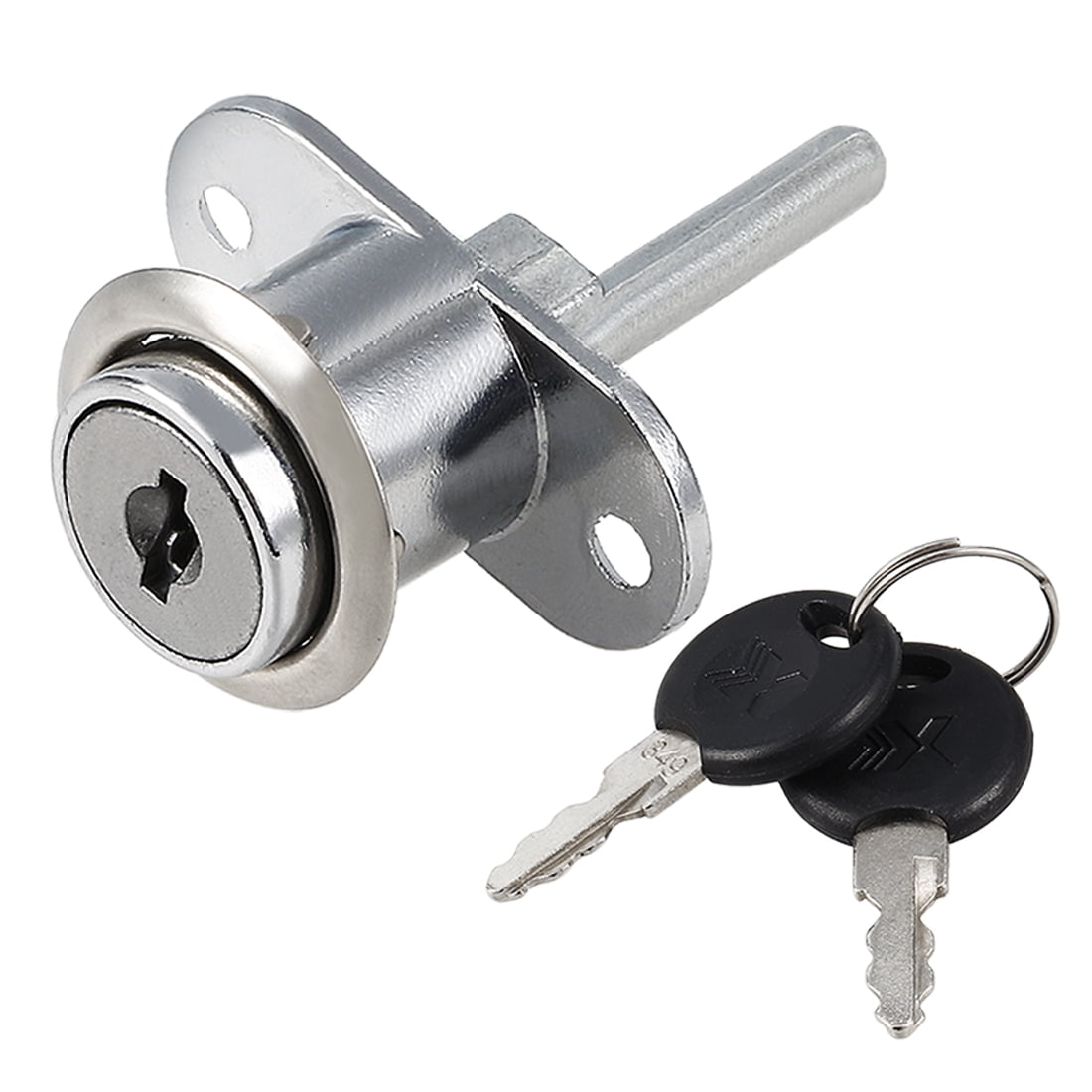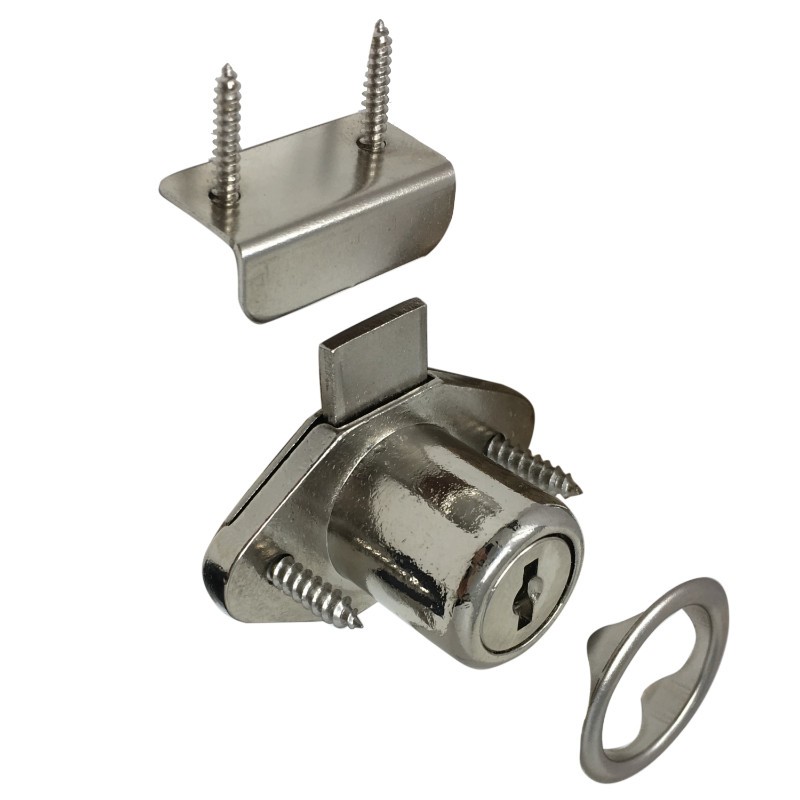Cabinet Key Locks at Lowe’s: Cabinet Key Locks Lowes

Lowe’s offers a wide selection of cabinet key locks, providing homeowners with various options to enhance security and protect valuable belongings. These locks come in different styles, materials, and security levels, catering to diverse needs and budgets.
Types of Cabinet Key Locks
Cabinet key locks at Lowe’s come in various types, each offering unique features and benefits. Understanding these types helps you choose the right lock for your specific needs.
- Cam Locks: These are the most common type of cabinet lock, featuring a simple design with a cam that rotates to engage or disengage the locking mechanism. They are typically inexpensive and easy to install, making them suitable for basic security needs.
- Deadbolt Locks: These locks offer greater security than cam locks. They feature a deadbolt that extends into the strike plate, making it harder to force open. Deadbolt locks are ideal for cabinets containing valuable items or sensitive documents.
- Padlocks: Padlocks are portable and versatile, allowing you to secure cabinets, drawers, or other items. They are available in various sizes and materials, with some offering high-security features.
- Electronic Locks: These locks use electronic keys or codes for access, offering enhanced security and convenience. They are typically more expensive than traditional locks but provide advanced features like remote access and programmable settings.
Brands of Cabinet Key Locks
Lowe’s carries a range of cabinet key lock brands, each known for its unique features and quality. Understanding these brands helps you choose the best option for your needs.
- Kwikset: A well-known brand offering a wide selection of cabinet locks, including cam locks, deadbolt locks, and padlocks. Kwikset locks are known for their durability and reliability, providing good value for money.
- Schlage: Another reputable brand offering a range of cabinet locks with a focus on security and innovation. Schlage locks are known for their high-quality materials and advanced features, including keyless entry options.
- Baldwin: This brand offers premium cabinet locks with a focus on design and craftsmanship. Baldwin locks are known for their elegant finishes and robust construction, making them suitable for high-end applications.
- Defiant: A budget-friendly brand offering a selection of cabinet locks with basic security features. Defiant locks are suitable for applications where cost is a primary concern.
Selecting the Right Cabinet Key Lock
Choosing the right cabinet key lock depends on several factors, including security level, budget, and installation complexity.
- Security Level: Consider the value of the items you want to protect. For basic security, cam locks or padlocks may suffice. For higher security needs, consider deadbolt locks or electronic locks.
- Budget: Cabinet key locks vary in price, ranging from inexpensive cam locks to high-end electronic locks. Set a budget before shopping to narrow down your choices.
- Installation Complexity: Some locks are easier to install than others. Consider your DIY skills and the complexity of the installation process when choosing a lock.
Installation and Usage Guide

Installing and using cabinet key locks is a straightforward process that enhances the security of your valuable belongings. This guide provides detailed instructions and tips for a successful installation and optimal usage.
Installing a Cabinet Key Lock
Installing a cabinet key lock is a simple DIY project that can be completed with basic tools and materials.
- Tools and Materials:
- Cabinet key lock
- Screwdriver
- Pencil
- Measuring tape
- Drill (optional)
- Drill bits (optional)
- Steps:
- Choose the location: Select a suitable spot on the cabinet door for the lock. Ensure that the location is accessible and does not interfere with the cabinet’s functionality.
- Mark the location: Use a pencil to mark the center point of the lock on the cabinet door.
- Drill the pilot holes (optional): If the lock requires pilot holes, drill them using a drill bit that is slightly smaller than the screws provided with the lock.
- Attach the lock: Align the lock with the marked location and secure it to the cabinet door using the screws provided. Ensure that the lock is firmly attached and the screws are fully tightened.
- Install the strike plate (if applicable): If the lock comes with a strike plate, attach it to the cabinet frame using the provided screws. The strike plate should be aligned with the lock’s latch.
- Test the lock: Once the lock is installed, test it by opening and closing the cabinet door. Ensure that the lock engages and disengages smoothly.
Using a Cabinet Key Lock, Cabinet key locks lowes
Using a cabinet key lock is a simple process that ensures the security of your belongings.
- Locking the Cabinet:
- Insert the key into the lock and turn it clockwise until you feel resistance.
- Remove the key to secure the cabinet.
- Unlocking the Cabinet:
- Insert the key into the lock and turn it counter-clockwise until the lock disengages.
- Remove the key and open the cabinet door.
- Security Precautions:
- Store keys securely: Keep the keys to your cabinet locks in a safe place, away from unauthorized access.
- Change locks regularly: Consider changing your cabinet key locks periodically to enhance security.
- Use high-quality locks: Invest in high-quality cabinet key locks with sturdy construction and reliable mechanisms.
- Avoid leaving keys in the lock: Never leave keys in the lock, as this can make your cabinet vulnerable to theft.
Troubleshooting Common Issues
While cabinet key locks are generally reliable, you may encounter some common issues.
- Key won’t turn:
- Check for obstructions: Inspect the lock for any debris or obstructions that may be preventing the key from turning. Use a small tool to remove any obstructions.
- Lubricate the lock: If the lock is stiff or difficult to turn, apply a small amount of lubricant to the keyhole and the lock mechanism.
- Replace the lock: If the lock is severely damaged or worn out, consider replacing it with a new one.
- Lock won’t latch:
- Adjust the strike plate: If the lock is not latching properly, adjust the strike plate to align with the lock’s latch.
- Replace the latch: If the latch is damaged or worn out, replace it with a new one.
Security and Safety Considerations

Cabinet key locks offer a simple yet effective way to secure valuable belongings and sensitive information within your home. While they are not impenetrable, using high-quality locks and implementing proper security practices can significantly deter unauthorized access and enhance overall home security.
Types of Cabinet Key Locks and Security Risks
Different types of cabinet key locks offer varying levels of security, and understanding their vulnerabilities is crucial for making informed choices.
- Basic Knob Locks: These locks are commonly found on cabinets and drawers and typically provide a basic level of security. However, they can be easily picked or forced open with simple tools, making them unsuitable for securing high-value items.
- Deadbolt Locks: Deadbolt locks offer a higher level of security compared to knob locks. They feature a locking mechanism that extends into the frame, making them more difficult to force open. However, deadbolt locks can still be vulnerable to picking or drilling if not installed properly.
- Lever Handle Locks: Lever handle locks are often used on cabinets and doors and offer a similar level of security to knob locks. They can be vulnerable to picking and forcing open, especially if they lack a deadbolt mechanism.
- Combination Locks: Combination locks rely on a numerical code for access and can be more secure than key locks if the combination is not easily guessed. However, combination locks can be vulnerable to brute-force attacks, where someone attempts to guess the combination repeatedly.
- Electronic Locks: Electronic locks utilize electronic keypads or fingerprint scanners for access and can provide a high level of security. However, electronic locks can be vulnerable to hacking or malfunctioning, and they may require batteries or other power sources to operate.
Safeguarding Cabinet Key Locks
To protect your cabinet key locks from tampering and unauthorized access, consider these measures:
- Choose High-Quality Locks: Invest in high-quality locks with solid construction and robust locking mechanisms. Look for locks that are certified by reputable organizations, such as the American National Standards Institute (ANSI).
- Install Locks Properly: Ensure that the locks are installed correctly and securely. Consult a professional if you are unsure about the installation process.
- Change Locks Regularly: Change the locks on your cabinets periodically, especially if you suspect that someone may have gained access to your keys. This helps to prevent unauthorized access.
- Store Keys Securely: Keep your cabinet keys in a safe and secure location, separate from other keys or easily accessible areas. Consider using a key safe or a locked drawer.
- Use Security Cameras: Install security cameras to monitor your cabinets and surrounding areas. This can help to deter theft and provide evidence in case of an incident.
- Be Mindful of Security Practices: Be aware of your surroundings and avoid leaving your keys unattended or in plain sight. Keep your cabinet doors closed and locked when not in use.
Cabinet key locks lowes – Cabinet key locks from Lowe’s can offer an added layer of security for your belongings, particularly if you’re looking to protect valuable items stored within your RV. When designing your dream home on wheels, consider the functionality and security of your RV cabinets and furniture.
Cabinet key locks can also be a practical solution for families, preventing young children from accessing potentially hazardous items.
Cabinet key locks, readily available at Lowe’s, can enhance the security of any cabinet, including those repurposed for a new purpose. A vintage china cabinet, for example, can be transformed into a stylish bar or a modern media center, as detailed in this guide.
Whether used for storage or display, a cabinet key lock can add an extra layer of protection, ensuring your valuables remain safe and secure.
